How to dethatch a lawn – and how to prevent thatch forming
Experts offer their advice on how to dethatch a lawn, and why it is so important

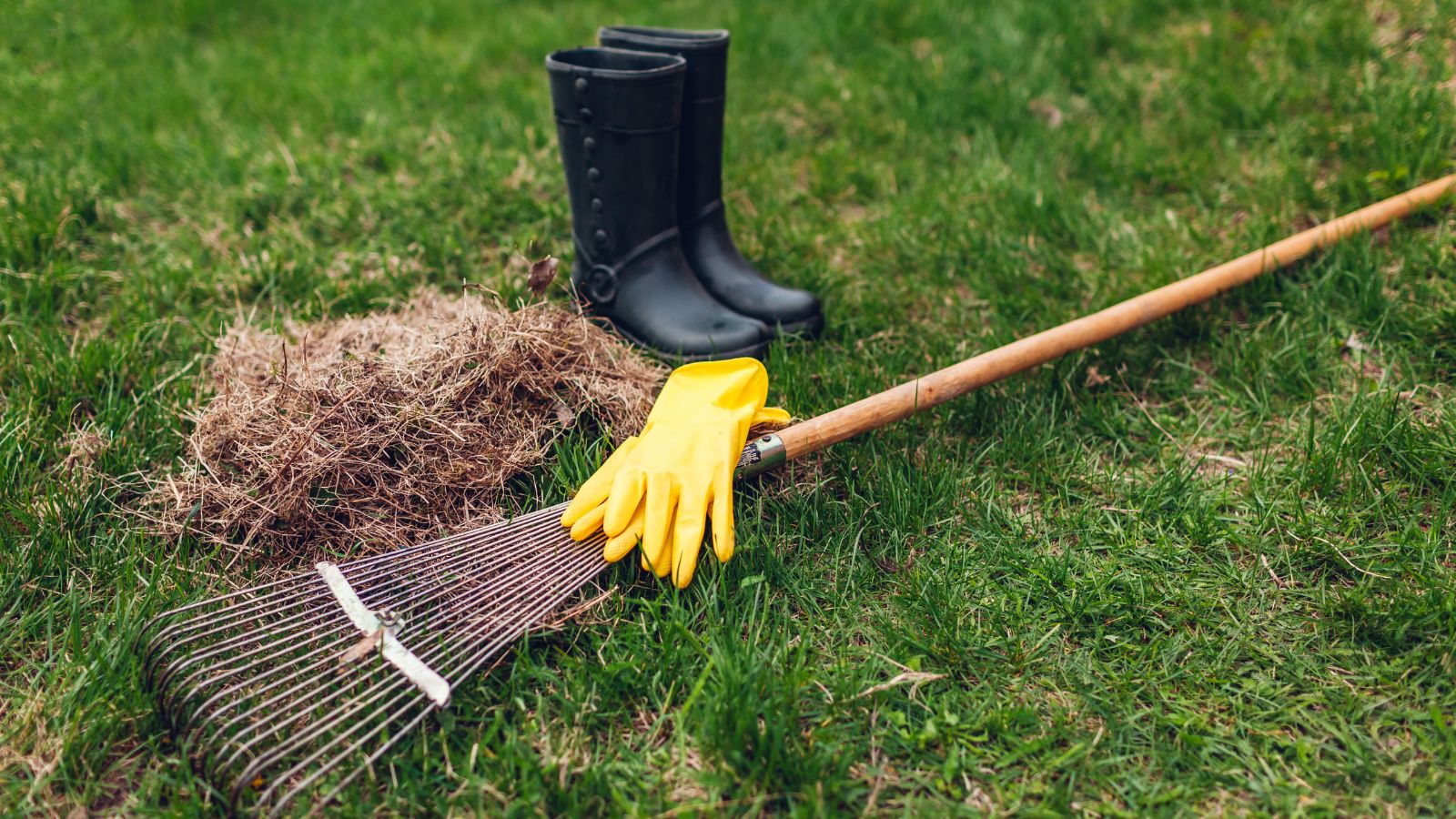
Thatch is a natural part of a lawn and generally is a sign of healthy turf. Excessive thatch, however, can hamper your grass' growth and even lead to dying spots.
Knowing how to dethatch a lawn is an essential part of lawn care advice that every gardener should know. Luckily, it is not difficult to know when the best time to dethatch your lawn is, as you will likely notice clues your lawn is giving you that it’s in trouble. If you notice that your lawn feels spongy, as if you were walking on carpet, or there is a thick layer of brown, spongy material when you look at your turf side on, then you may have a thatch issue.
‘While a little thatch is normal and healthy, too much can harm your lawn and prevent it from accessing enough moisture, light, and nutrients to fully recover back into that luscious green lawn we all love,’ explains Lawn care expert David Truby, Managing Director of Greensleeves. ‘Thatch can also provide the perfect breeding ground for various diseases and pests. Scarifying your lawn is a great way to solve this problem too.’
Here, experts have explained how to get rid of excessive thatch so you can restore your lawn.
How to dethatch a lawn
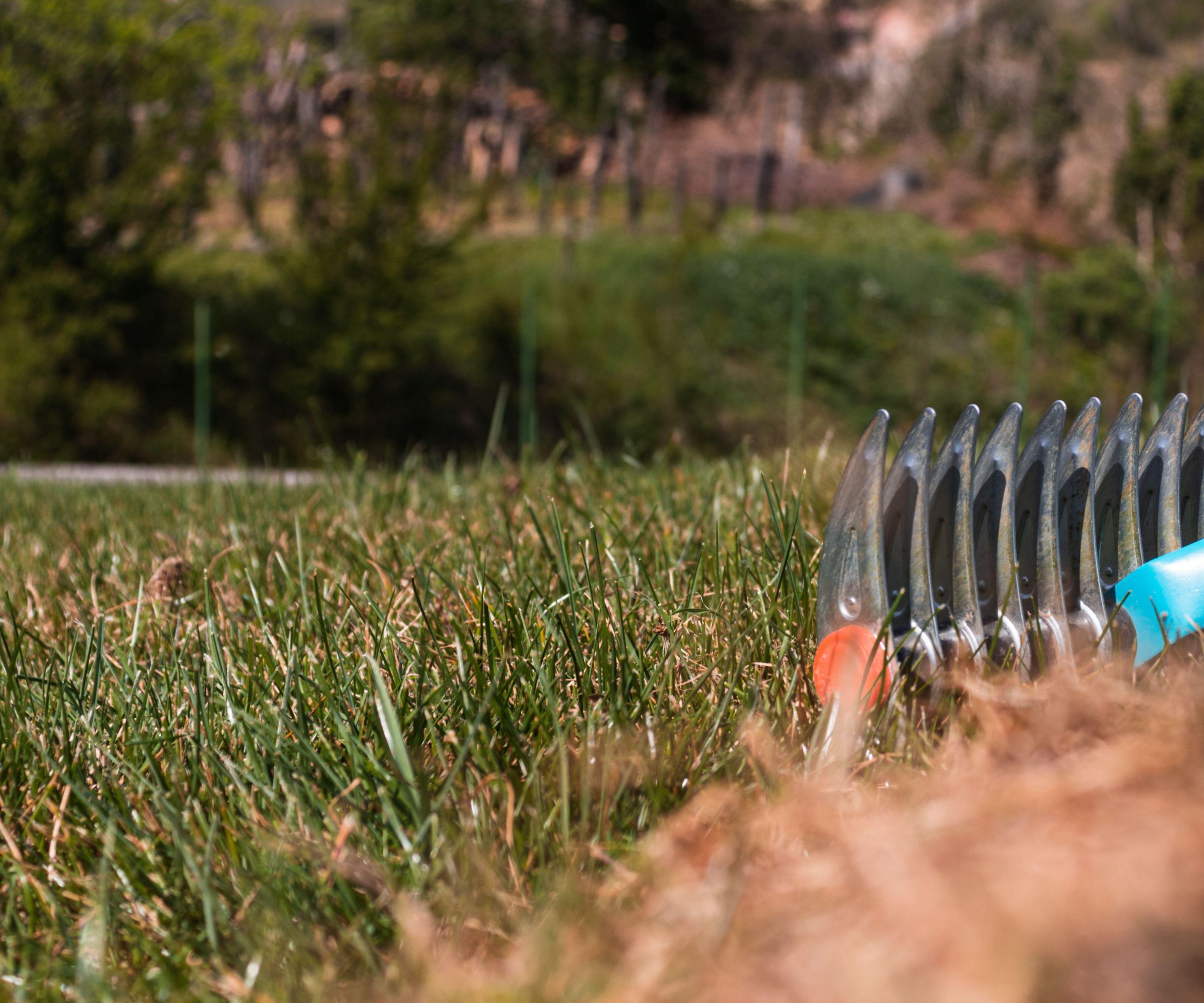
'Dethatching can be an easy fall lawn care task if the thatch is not yet over two inches deep,’ says Rachel Crow, garden editor for Homes & Gardens. ‘Any thatch over two inches deep should be taken care of by a professional to avoid damaging the grassroots and killing your lawn.
'Thatch is destroyed by naturally occurring fungi. If you have a healthy lawn, with the right balance of natural soil fungi, your lawn should be resilient to thatch,' says Jonathan Hill from Rolawn. 'If however a lawn is struggling to grow well or you can’t reintroduce the fungi you may need to scarify the lawn,' he suggests.
'Scarification is the traditional way to dethatch a lawn and can be done in one of three ways: firstly, you can manually use a spring-tine rake (or a similar alternative) to dethatch the lawn by pulling it through the grass sward. For a larger piece of land, hire or buy a power rake or a powered scarifier from a local garden center or power tool supplier.'
Design expertise in your inbox – from inspiring decorating ideas and beautiful celebrity homes to practical gardening advice and shopping round-ups.
You can also buy lawn dethatchers and scarifiers on Amazon.
1. Dethatch your lawn manually
Manually dethatching your lawn is one of the more strenuous ways of tackling a thatched lawn, however uses tools you likely already have in your garden shed.
‘Using a dethatching rake, such as this one on Amazon is best for light thatch and general thatch maintenance,’ Rachel Crow suggests. ‘Push the rake tines thorough the grass until it penetrates the thatch layer below. Rake the grass as you would rake leaves to loosen the thatch and tear it apart.’
You can use a normal leaf rake for this, however it may not have the same effect. Any raking is better than no raking, however, especially if you dethatch a lawn regularly.
2. Dethatch your lawn with a power rake
Power rakes appear much like a mower with rotating, rake-like tines that dig into the thatch level like a manual rake with less effort. Power rakes, despite their efficiency should only be used on hardy grass with light thatch that can withstand intense raking.
3. Use a vertical mower for extreme cases
‘If your lawn is suffering from a very thick thatch layer, a vertical mower may be needed to break through and tear up the thatch,’ says H&G's Rachel Crow. ‘These mowers have vertical blades that reach deep into the soil layer to pull thatch to the surface with ease.’
It is worth noting that these devices may also pull up grass roots, meaning that you have to overseed your lawn or learn how to plant grass seed to rejuvenate your lawn afterwards. These machines are best used on lawns that are in need of major renovation.
What to do after dethatching a lawn
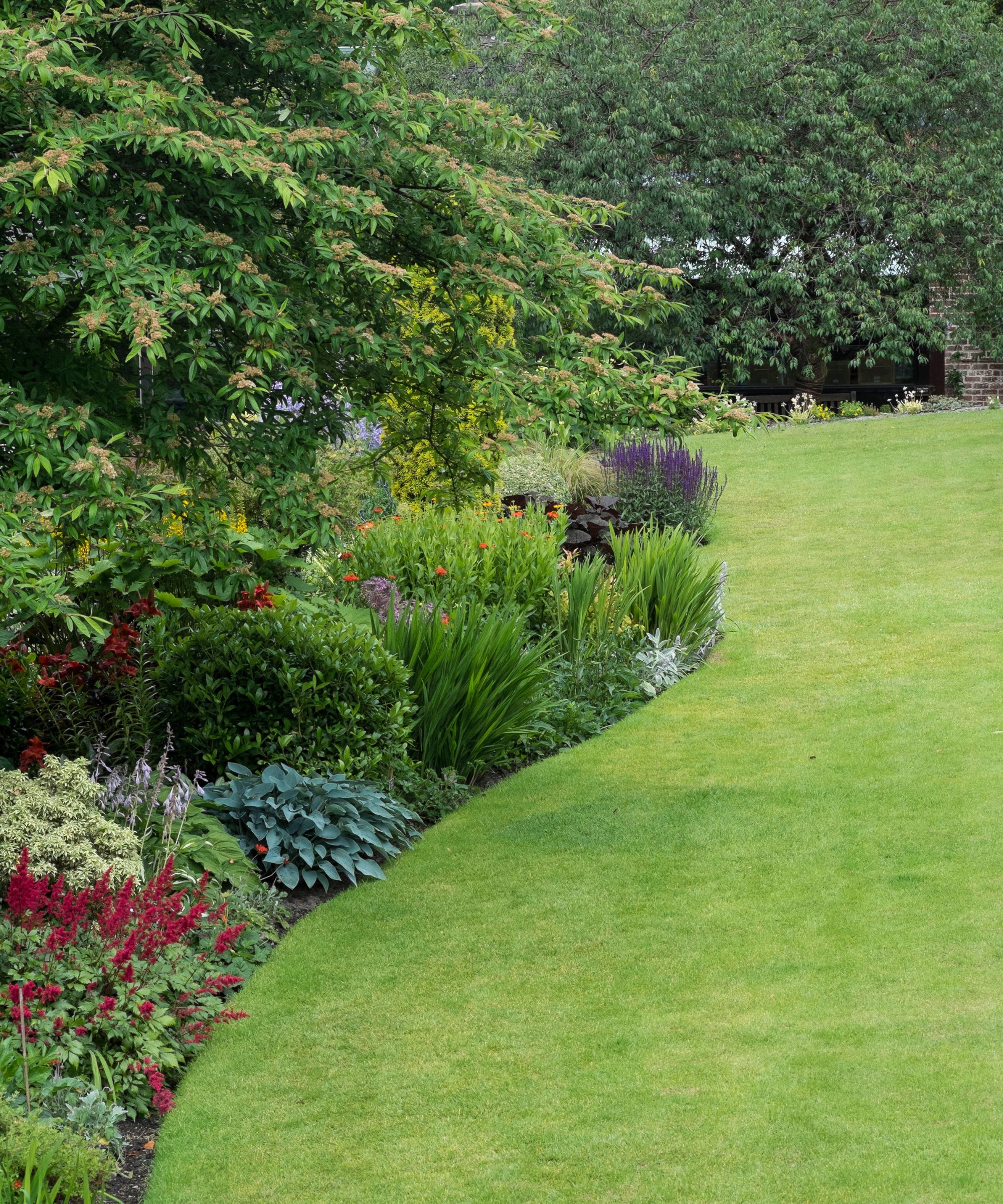
‘Dethatching a lawn should be carried out in early spring or fall so that you can replant grass seed to get your lawn back on track for summer,’ Rachel recommends. ‘After you have dethatched your lawn, reseed the soil to repair any patches of damaged grass roots.’
It is also recommended that you learn how to aerate a lawn after dethatching to restore nutrients, water drainage, and air flow to the damaged ground. Although many people ask why aerate a lawn after dethatching given that the soil has already been dispersed, coring or scarifying your soil helps air and water reach even deeper levels of compacted soil – something that will likely be desperately needed after the thatch layer has starved the lower layers of vital nutrients.
What is thatch?
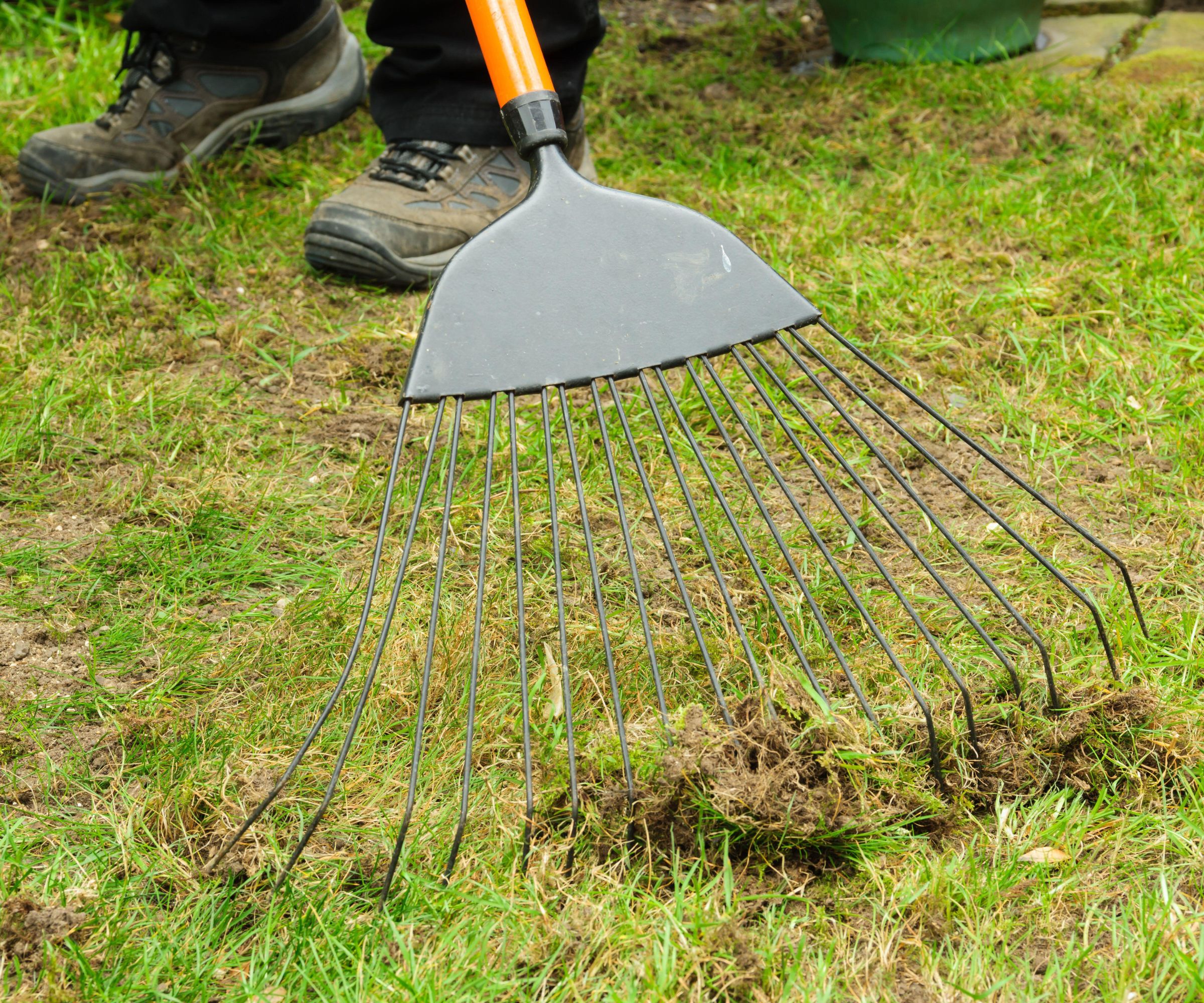
'Thatch is a natural part of the living turf and is generally desirable in small amounts,' explains Jonathan Hill from Rolawn. 'A thin layer of thatch improves the overall health of the lawn, but thatch that is left to get too thick can stop water and air penetration to your lawn, which can leave the lawn looking tired and old.'
Thatch is a layer of organic debris made up of dead and living plant and animal matter. It forms around the base of grass where the stems meet the soil and, while some matter breaks down quickly and easily, other matter takes time to decompose, slowly building up over time until it can sometimes smother the grassroots and prevent water and air from reaching the soil and roots. Most grass lawns have a thatch layer less than half an inch thick, however, a thatch of one inch or more begins to damage your grass.
Not knowing how to fertilize a lawn correctly can lead to an excessive thatch problem, Jonathan adds: 'thatching is a layer of dead turf material and is not formed from the grass leaves that fall into the turf after mowing, as some believe. Thatch forms for several reasons, but the most important is improper fertilization. When grass is growing properly, it forms new roots, stems and leaves as the old ones die. If new grass is formed at about the same rate as the old dies, there will be no thatch accumulation. If the grass grows faster than the old material can be destroyed, thatch accumulates.'
Layering too much fertilizer, or the wrong fertilizer, over a lawn as well as supplying fertilizer too frequently can quickly lead to a build-up of matter on the top of the soil and harm your grass when you think you are helping it.
How to prevent lawn thatch
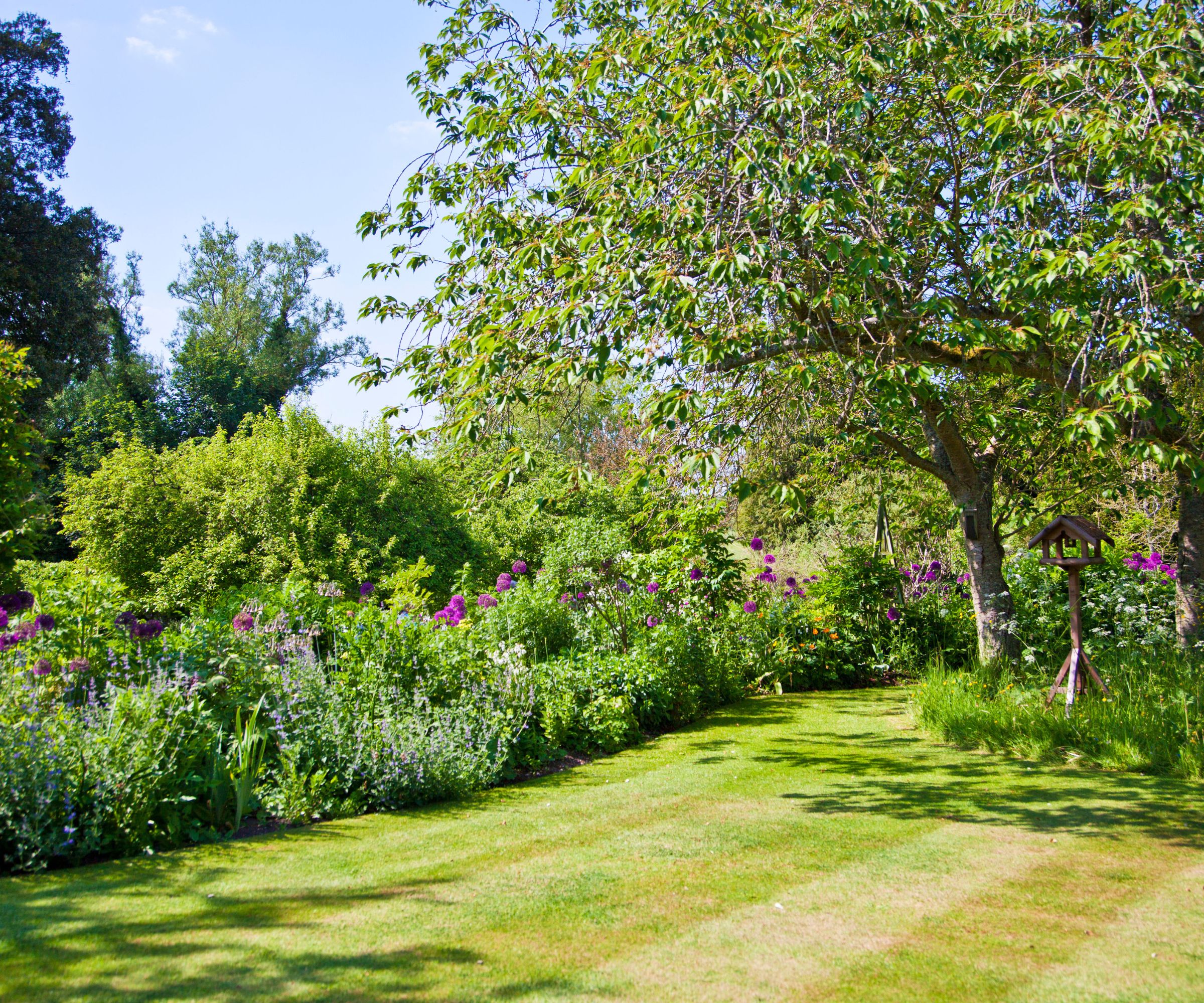
‘In order to prevent a thatch problem, avoid garden practices that may lead to an organic matter build up, such as watering too frequently, using the incorrect fertilizer such as ones too high in nitrogen, and failing to rake organic matter such as dead leaves away,’ says Gardens Editor Rachel Crow. ‘Encouraging some garden creatures such as worms can also help prevent excessive thatch as they help in the decomposition of thatch. Lay off the pesticides as and when possible to give your lawn a better chance of survival.’
Is it better to dethatch or aerate your lawn?
Dethatching and aerating a lawn should be done together for optimal lawn care. Dethatching your lawn before aerating will allow for greater air, nutrient, and water penetration – especially over the winter months

Chiana has been at Homes & Gardens for two years and is our resident 'queen' of non-toxic living. She spends most of her time producing content for the Solved section of the website, helping readers get the most out of their homes through clever decluttering, cleaning, and tidying tips. She was named one of Fixr's top home improvement journalists in 2024.